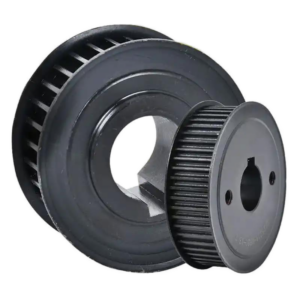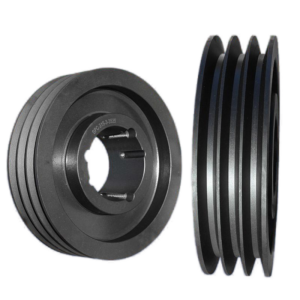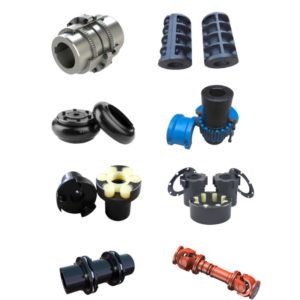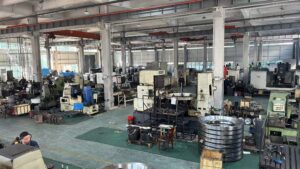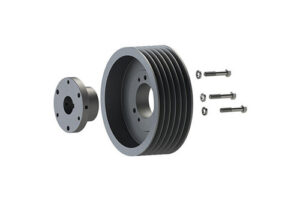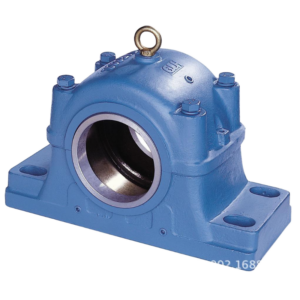When it comes to achieving smooth, efficient, and precise operation in mechanical systems, the timing pulley plays a crucial role. Often overlooked, these essential components help maintain synchronization between gears and belts, preventing slippage and ensuring consistent performance. But how exactly do timing pulleys work, and how do you choose the right one for your needs? In this guide, I’ll dive into everything you need to know, from understanding the different types of timing pulleys and their applications to exploring the importance of precision in design and tooth profiles. I’ll also cover how timing pulleys enhance efficiency, tips for proper maintenance, and even solutions for common issues. Whether you’re installing a new system or upgrading an old one, this post will help you make informed decisions about your timing pulley setup, ensuring your machinery operates at its best for years to come.
1. What is a Timing Pulley and How Does It Work?
A timing pulley is a type of pulley that engages with a toothed belt to transmit rotary motion and power between shafts. Unlike standard pulleys, which rely on friction, timing pulleys rely on the teeth on both the pulley and the belt to mesh together and prevent slippage. This design ensures precise, synchronized movement, making timing pulleys essential for applications where accuracy is critical—think of everything from conveyor systems to automotive engines. The teeth on the pulley are designed to match the corresponding teeth on the timing belt, ensuring smooth and reliable power transmission.
2. The Different Types of Timing Pulleys and Their Applications
Timing pulleys come in several types, each designed for specific applications. Some of the most common types include:
- HTD (High Torque Drive): These are designed for high-torque applications and are commonly used in machinery requiring significant power transmission.
- GT (Ground Tooth): GT pulleys are made with precision-ground teeth, offering higher performance and quieter operation, ideal for high-speed and high-load systems.
- T-Series: These pulleys are used for applications where torque requirements are moderate, and are popular in industrial machines and robotics.
Each type offers distinct advantages depending on the operating conditions, making it crucial to understand your system’s needs before selecting the right timing pulley.
3. How to Choose the Right Timing Pulley for Your System’s Needs
Choosing the right timing pulley isn’t just about picking any available option—several factors come into play. The key things to consider are:
- Pitch: This refers to the distance between the teeth on the timing pulley. It’s essential to choose a pulley that matches the pitch of the timing belt to ensure proper engagement.
- Material: Timing pulleys are typically made from materials like steel, aluminum, or plastic. Steel offers strength and durability, while aluminum is lightweight and corrosion-resistant. Plastic pulleys, while not as strong, can be ideal for quieter, less demanding applications.
- Size: The size of the pulley must align with the specific needs of your system. Too small, and you risk insufficient torque; too large, and it might strain the motor or require more space than is available.
By considering these factors, you can choose the ideal timing pulley for your machinery, optimizing both performance and longevity.
4. The Importance of Precision in Timing Pulley Design
Precision is crucial when it comes to timing pulleys. A small misalignment in the teeth can lead to excessive wear, loss of efficiency, or even complete failure of the system. High-quality timing pulleys are designed with accuracy to ensure that the teeth fit perfectly with the timing belt, preventing slippage and ensuring consistent speed and torque. This precision is especially important in high-speed or high-precision systems, where even minor deviations can cause significant operational issues.
5. Understanding Timing Pulley Tooth Profiles: Why It Matters
The tooth profile of a timing pulley plays a significant role in how well it performs. The most common tooth profiles are trapezoidal and curvilinear. Trapezoidal teeth, which are the most common, provide a good balance between strength and efficiency, making them suitable for most general-purpose applications. On the other hand, curvilinear profiles provide smoother engagement and less noise, making them ideal for higher-speed applications where quieter operation is essential.
Understanding the tooth profile of your timing pulley helps you choose the right match for your system’s requirements, ensuring efficient power transfer and reducing the likelihood of premature wear.
6. The Role of Timing Pulleys in Preventing Slippage and Enhancing Efficiency
One of the key advantages of timing pulleys is their ability to prevent slippage. Unlike regular pulleys that rely on friction to transfer power, timing pulleys engage with toothed belts that “lock” the pulley and belt together. This eliminates the risk of slippage and ensures that the timing remains synchronized across the system. The result is smoother operation, more consistent power delivery, and less wear on the components.
By using timing pulleys, you can significantly increase the efficiency of your machinery, reduce energy waste, and improve overall system reliability.
7. How to Maintain Your Timing Pulley for Longevity and Optimal Performance
Proper maintenance is essential to keep timing pulleys functioning at their best. Regular inspection is key to identifying potential issues before they cause significant damage. Here are a few tips for maintenance:
- Regular Cleaning: Dust, dirt, and debris can interfere with the smooth operation of the timing pulley and belt. Clean them regularly to prevent buildup.
- Lubrication: While timing pulleys often don’t require much lubrication, certain high-speed or high-load systems may benefit from periodic lubrication to reduce friction.
- Inspection: Check for wear, misalignment, or cracks in the pulley teeth, and replace any damaged pulleys promptly to avoid further issues.
Proper maintenance not only extends the lifespan of your timing pulleys but also ensures your system continues to operate at peak efficiency.
8. Choosing the Right Timing Pulley Material for Different Operating Environments
The material of the timing pulley plays a major role in its performance and durability. Steel is strong and durable, making it ideal for high-torque applications. Aluminum is lightweight, corrosion-resistant, and often used in lighter-duty systems or where weight is a concern. Plastic pulleys are quieter and lighter, but they are more suitable for low-load, low-torque applications. Consider the operating environment of your machinery—whether it’s exposed to extreme temperatures, moisture, or harsh chemicals—to ensure the material you choose is compatible with those conditions.
9. Common Issues with Timing Pulleys and How to Fix Them
Timing pulleys, like any other mechanical components, can experience problems. Some common issues include:
- Wear on Teeth: Over time, the teeth on the pulley can wear down, leading to poor performance. Replace the pulley when you notice significant wear.
- Misalignment: If the pulley becomes misaligned, it can cause uneven wear and reduce system efficiency. Regularly check and adjust alignment.
- Noise: Excessive noise can be a sign of issues like misalignment, improper tooth engagement, or worn-out pulleys. Investigate the cause of the noise and address it promptly.
Addressing these issues early can help avoid more significant damage and downtime.
10. Timing Pulley Installation: A Step-by-Step Guide for Proper Setup
Installing timing pulleys properly is crucial for ensuring efficient and reliable operation. Here’s a quick guide for installation:
- Prepare the Components: Ensure that the pulley, belt, and any related components are clean and free from debris.
- Align the Pulley and Belt: Place the pulley and belt in position, ensuring they are correctly aligned.
- Tighten the Pulley: Secure the pulley to the shaft, making sure it is firmly in place but not over-tightened.
- Check for Proper Engagement: Rotate the pulley and belt to check that the teeth engage properly without any skipping or slipping.
Proper installation ensures your timing pulley performs optimally, preventing unnecessary wear and reducing the risk of system failure.
Conclusion
Timing pulleys are a critical component in ensuring smooth, efficient, and reliable operations in mechanical systems. By understanding the different types of timing pulleys, selecting the right materials and sizes, and performing regular maintenance, you can optimize your machinery’s performance and longevity. Whether you’re upgrading an existing system or installing a new one, the right timing pulley makes all the difference in achieving optimal power transmission and minimizing operational issues. With this knowledge, you’re now equipped to make informed decisions and keep your systems running at their best.

